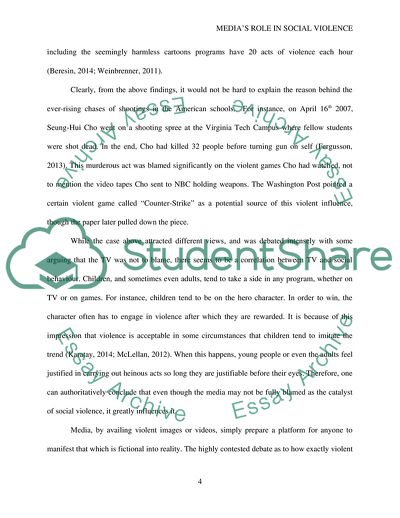Cite this document
(Medias Role in Social Violence Case Study Example | Topics and Well Written Essays - 2250 words, n.d.)
Medias Role in Social Violence Case Study Example | Topics and Well Written Essays - 2250 words. https://studentshare.org/media/1870251-media-violence-is-a-significant-cause-of-social-violence-critically-discuss-this-statement-with-reference-to-appropriate-audience-theory-models-and-textual-examples
Medias Role in Social Violence Case Study Example | Topics and Well Written Essays - 2250 words. https://studentshare.org/media/1870251-media-violence-is-a-significant-cause-of-social-violence-critically-discuss-this-statement-with-reference-to-appropriate-audience-theory-models-and-textual-examples
(Medias Role in Social Violence Case Study Example | Topics and Well Written Essays - 2250 Words)
Medias Role in Social Violence Case Study Example | Topics and Well Written Essays - 2250 Words. https://studentshare.org/media/1870251-media-violence-is-a-significant-cause-of-social-violence-critically-discuss-this-statement-with-reference-to-appropriate-audience-theory-models-and-textual-examples.
Medias Role in Social Violence Case Study Example | Topics and Well Written Essays - 2250 Words. https://studentshare.org/media/1870251-media-violence-is-a-significant-cause-of-social-violence-critically-discuss-this-statement-with-reference-to-appropriate-audience-theory-models-and-textual-examples.
“Medias Role in Social Violence Case Study Example | Topics and Well Written Essays - 2250 Words”. https://studentshare.org/media/1870251-media-violence-is-a-significant-cause-of-social-violence-critically-discuss-this-statement-with-reference-to-appropriate-audience-theory-models-and-textual-examples.


